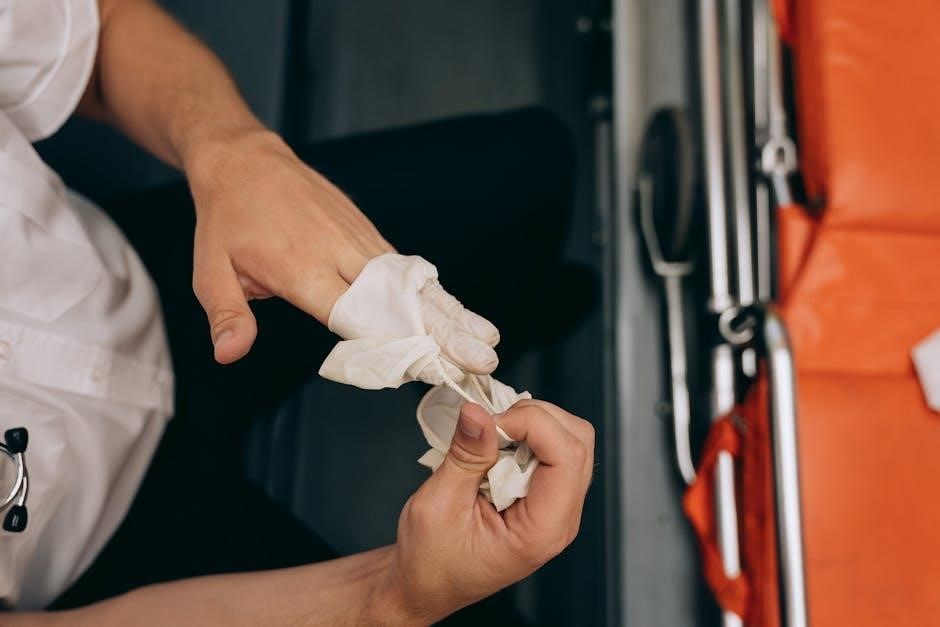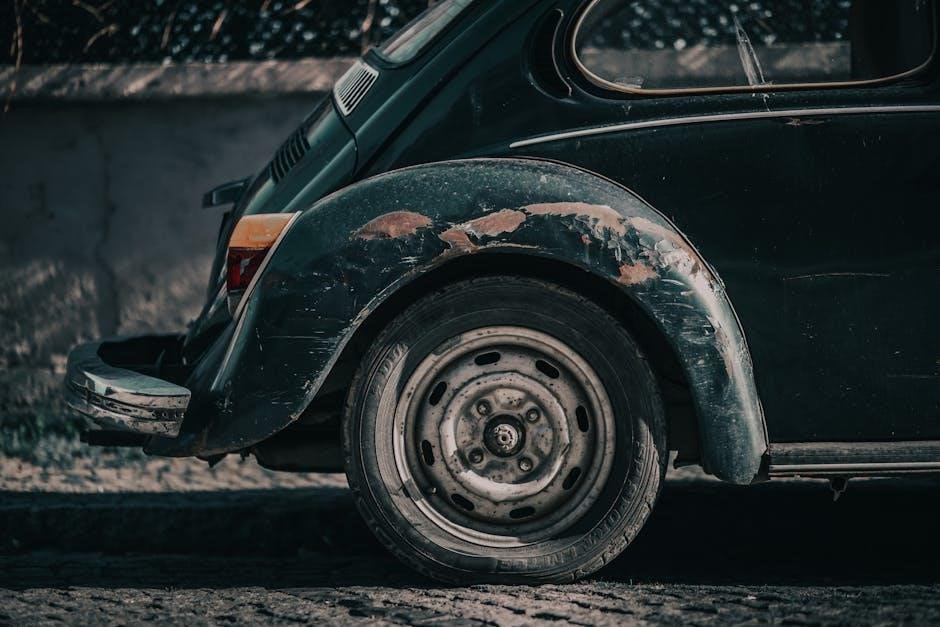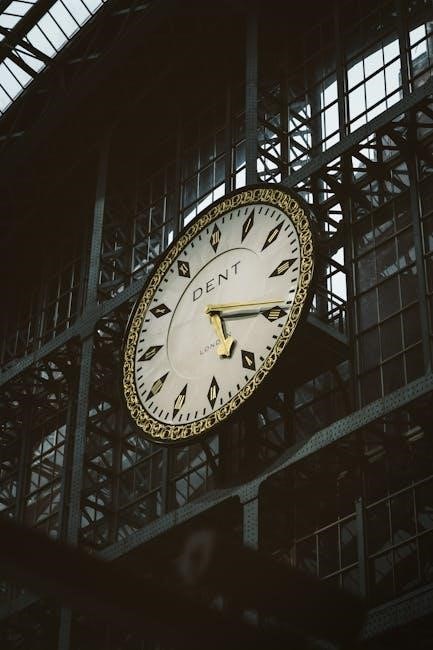Paintless Dent Removal (PDR) is a non-invasive technique for repairing vehicle dents without damaging the paint. It’s ideal for hail damage and minor dents, preserving the car’s original finish and value while being environmentally friendly.
What is Paintless Dent Removal?
Paintless Dent Removal (PDR) is a non-invasive method for repairing dents in vehicles without damaging the paint. It involves using specialized tools like hammers, rods, and tabs to gently push dents out from the inside of the metal panel. This technique is most effective for small to medium-sized dents caused by hail, parking lot incidents, or minor collisions. PDR preserves the vehicle’s original paint job, maintaining its aesthetic value and avoiding the need for costly repainting. It’s also environmentally friendly, as it reduces waste and the use of harsh chemicals.
History and Evolution of PDR
Paintless Dent Removal (PDR) originated in Europe in the 1960s, particularly in Germany and Italy, where it was used to repair dents in automobile manufacturing. The technique gained popularity in the U.S. in the 1980s, becoming a preferred method for hail damage repair. Over time, advancements in tools and techniques, such as high-carbon steel rods and glue tabs, have improved PDR’s efficiency and versatility. Today, PDR is a globally recognized method, widely used for minor dents and hail damage, offering a cost-effective and environmentally friendly alternative to traditional repair methods.
Benefits of PDR Over Traditional Dent Repair
Paintless Dent Removal (PDR) offers several advantages over traditional dent repair. It is a non-invasive method that preserves the vehicle’s original paint finish, eliminating the need for repainting. PDR is cost-effective, typically 50-75% cheaper than conventional repairs, and requires less time. It is environmentally friendly, reducing waste from paints and materials. Additionally, PDR restores the vehicle to its factory condition, maintaining its resale value. This method is ideal for minor dents and hail damage, providing a quick and efficient solution without compromising quality or longevity.

Understanding the Tools and Techniques
PDR involves specialized tools like hammers, rods, and tabs to gently reshape metal without damaging paint. Techniques include accessing dents from the inside and precision manipulation.
Common PDR Tools: Hammers, Rods, and Tabs
PDR relies on specialized tools like hammers, rods, and tabs to repair dents without damaging paint. Hammers are used for precision tapping, while rods access tight spaces. Tabs attach to dents, allowing technicians to pull them out gently. These tools are designed to flex and reshape metal without harming the vehicle’s finish. Each tool serves a specific purpose, ensuring a seamless repair process. Professionals use these instruments to restore vehicles to their original condition efficiently and effectively, making them essential for successful PDR applications.
Glue Pulling vs. Knocking Down: Key Differences
Glue pulling and knocking down are two primary techniques in PDR. Glue pulling involves applying adhesive tabs to pull dents outward, ideal for larger dents without panel access. Knocking down uses hammers and rods to push dents from inside, suitable for smaller, accessible dents. Both methods aim to restore the vehicle’s surface without paint damage. Glue pulling is non-invasive, while knocking down offers more control. Each technique has its strengths, and technicians choose based on dent size, location, and panel accessibility for optimal results.
Modern Innovations in PDR Technology
Recent advancements in PDR technology include LED lighting systems for better dent visibility and precision tools like laser measuring devices. Thermal imaging tools now help technicians locate dents more efficiently, while eco-friendly adhesives reduce environmental impact. Automated PDR machines are emerging, enabling faster repairs with minimal human error. These innovations enhance accuracy, reduce repair time, and expand the range of repairable dents, making PDR more accessible and effective for modern vehicles.

Step-by-Step Guide to Paintless Dent Removal
This guide outlines the process of Paintless Dent Removal, from assessing damage to applying tools and final polishing, ensuring a seamless repair without painting.
Assessing the Dent: Size, Location, and Depth
Assessing the dent is the first step in PDR. Evaluate the dent’s size, location, and depth to determine if PDR is feasible. Use specialized tools like LED lights and depth gauges to measure accurately. Check if the dent is accessible from the backside of the panel. Ensure the paint is intact and the metal is flexible enough for repair. This step ensures the technician understands the damage scope, allowing for an effective repair plan. Proper assessment is crucial for a successful outcome.
Preparing the Vehicle for PDR
Preparing the vehicle is essential for successful PDR. Clean the dented area thoroughly to remove dirt, oils, or waxes that might interfere with tools or adhesives. Ensure the surface is dry and free of contaminants. Remove any trim or panels to access the dent from the underside. This preparation ensures proper tool maneuverability and prevents further damage. A well-prepared vehicle allows technicians to work efficiently, enhancing the repair quality and outcome. Proper preparation is key to achieving a seamless finish.
Applying the Glue Tabs or Pulling Tools
Applying glue tabs or pulling tools is a critical step in PDR. Technicians attach specially designed adhesive tabs to the dent and use a pulling tool to gently manipulate the metal back into shape; The tabs are carefully positioned to ensure even pressure, avoiding damage to the paint. For deeper dents, multiple tabs may be used. Once the dent is removed, the tabs are detached, leaving no residue. This method is precise and minimizes the risk of further damage, making it effective for various dent types.
Final Touches: Polishing and Inspecting
After removing the dent, the final step involves polishing to restore the paint’s original shine. Technicians use fine-grit polishers or specialized compounds to eliminate minor imperfections. A thorough inspection under bright lighting ensures no marks or unevenness remain. The vehicle is checked from multiple angles to confirm a flawless finish. This step is crucial for ensuring the repair is invisible, maintaining the car’s value and appearance. The goal is to leave the surface looking as good as new, with no signs of the previous damage.
When is PDR the Best Option?
PDR is ideal for small to medium dents without paint damage, offering a quick, cost-effective solution. It preserves the vehicle’s original paint, maintaining its value and appearance.
- Suitable for shallow dents and creases.
- Effective for hail damage and minor collisions.
- Recommended when the paint is intact and undamaged.
It’s a preferred method for car owners seeking a non-invasive, eco-friendly repair option that restores vehicles to their original condition efficiently.
Types of Dents Suitable for PDR
PDR is most effective for small to medium-sized dents caused by hail, minor accidents, or door dings. It works well for shallow dents without sharp edges or paint damage.
- Hail damage: Multiple small dents on the hood, roof, or trunk.
- Door dings: Minor creases from car doors or shopping carts.
- Light parking lot damage: Small, isolated dents in accessible areas.
- Minor collision dents: Low-impact accidents with no paint cracking.
Dents on body panels like hood, doors, and trunk are ideal if they don’t exceed the repair limits of PDR techniques.
Paint Condition: Is PDR Safe for Your Car’s Paint?
PDR is safe for your car’s paint if the paint is intact and not cracked or damaged. The technique works best on vehicles with modern, high-quality paint jobs. For older cars with faded or chipped paint, PDR may not be suitable. The process relies on the paint’s flexibility, so if the paint is brittle or worn, it may not withstand the repair. Always have a professional assess the paint condition to ensure PDR is the right choice for your vehicle.
Cost-Effectiveness: Comparing PDR to Traditional Methods
PDR is generally more cost-effective than traditional dent repair methods because it avoids the need for painting, sanding, or replacing body panels. This reduces labor and material costs significantly. PDR is often faster, with repairs completed in hours rather than days. However, for severely damaged vehicles or cases requiring extensive work, traditional methods may be more economical. The cost savings of PDR are most apparent for minor to moderate dents, making it a budget-friendly option for many car owners.

Common Myths About Paintless Dent Removal
Many believe PDR only fixes small dents or damages paint, but these are myths. PDR is versatile and safe when done by professionals, making it a reliable option.
Myth: PDR Only Works for Small Dents
While PDR is highly effective for small dents, it can also repair larger dents under the right conditions. Skilled technicians use specialized tools to reshape metal without damaging paint. The key is ensuring the paint is intact and the metal is still flexible. Larger dents may require more time and precision, but PDR remains a viable option; This myth overlooks the versatility of modern PDR techniques, which can address a wide range of dent sizes. Proper assessment by a professional determines feasibility, making PDR a reliable choice for many vehicle owners seeking quick and cost-effective repairs.
Myth: PDR Damages the Paint or Clear Coat
One of the most common misconceptions about Paintless Dent Removal (PDR) is that it damages the vehicle’s paint or clear coat. In reality, PDR is specifically designed to repair dents without harming the paint. Skilled technicians use specialized tools to gently manipulate the metal from behind the panel, ensuring the paint remains untouched. This technique is safe for modern automotive paints and clear coats, provided they are in good condition. Unlike traditional repair methods, PDR avoids the need for sanding, filling, or repainting, preserving the vehicle’s original finish. When performed correctly, PDR is a non-invasive and paint-safe solution for dent removal.

Myth: PDR is Only for Hail Damage
While PDR is highly effective for hail damage, it is not limited to this application. This technique can repair a wide variety of dents, including door dings, minor collisions, and creases. PDR is versatile and works on small to medium-sized dents, regardless of their cause. Its ability to restore panels without paint damage makes it a preferred method for many types of repairs. This myth overlooks the broad range of scenarios where PDR can be successfully applied, making it a valuable solution for many vehicle owners.

DIY PDR Kits: Should You Try It Yourself?
DIY PDR kits offer a cost-effective solution for minor dents but require skill and precision. They are best for small, shallow dents and may not suit all damage types.
Pros and Cons of DIY PDR Kits
DIY PDR kits offer cost savings and convenience for minor dent repairs, allowing car owners to fix small dents without professional help. They are ideal for shallow dents in accessible areas and can be a learning tool for enthusiasts. However, they require patience and skill, as improper use can worsen damage. Kits may not work for large or complex dents, and success depends on the dent’s size and location. While they provide a sense of accomplishment, they may lack the precision of professional tools, making them less reliable for significant repairs.
When to Avoid DIY PDR
DIY PDR is not recommended for large, deep, or complex dents, as these often require professional tools and expertise. Avoid attempting PDR on dents near the edge of body panels or in areas with limited access. Sharp creases or dents in aluminum panels are also best left to professionals; If the paint is cracked or damaged, DIY methods could worsen the issue. Additionally, avoid PDR if the dent is in a sensitive area or if you lack experience, as improper techniques can cause further damage. Always prioritize professional help in such cases.
Recommended Tools for Amateur PDR
For amateur PDR, essential tools include a suction cup dent remover, glue tabs, and a knock-down tool. Suction cups are ideal for small, shallow dents, while glue tabs provide more grip for slightly larger imperfections. A knock-down tool helps flatten the metal from the inside. Additional tools like a dent light or LED lamp can improve visibility. A heat source, such as a hairdryer, may soften the metal for easier shaping. Always choose high-quality tools to avoid damaging the vehicle’s surface. Practice on scrap metal before attempting repairs on your car.
Professional PDR Services
Professional PDR services offer expert technicians, advanced tools, and guaranteed results. They handle complex dents efficiently, ensuring a flawless finish without paint damage or costly repairs.
How to Choose a Reliable PDR Technician
Choosing a reliable PDR technician involves verifying their experience, certifications, and reputation. Look for technicians with extensive training and positive customer reviews. Ensure they use high-quality tools and techniques to avoid further damage. Request before-and-after photos of previous work to assess their skill level. Additionally, check if they offer a warranty or guarantee for their services. Avoid technicians who lack proper credentials or charge significantly lower prices than market standards, as this may indicate subpar work. A skilled technician will ensure a seamless and durable repair.
What to Expect During a Professional PDR Session
During a professional PDR session, a skilled technician will first assess the dent’s size, location, and depth to determine the best approach. They will use specialized tools to gently manipulate the metal from behind the panel, restoring it to its original shape. The process is typically performed in a controlled environment, and the technician will ensure minimal disruption to your schedule. Most repairs are completed within a few hours, depending on the dent’s complexity. After the session, the technician will inspect the area to ensure a flawless finish, leaving your vehicle looking like new.
Warranty and Guarantees: What Professionals Offer
Reputable PDR professionals often provide warranties and guarantees for their work, ensuring customer satisfaction. Many technicians offer a satisfaction guarantee, promising to correct any issues if the repair isn’t flawless. Some providers include a warranty against the dent reappearing, while others offer a lifetime guarantee for their workmanship. These assurances vary by provider, but they demonstrate a commitment to quality and reliability. Always inquire about written agreements and terms before service to understand what’s covered. This adds peace of mind when trusting your vehicle to a professional.
Case Studies and Real-World Applications
Explore how Paintless Dent Removal has been successfully applied in various scenarios, from hail damage repair to restoring classic cars, demonstrating its versatility and effectiveness.
Success Stories: Before and After PDR
Discover remarkable transformations where Paintless Dent Removal successfully restored vehicles to their original condition. From severe hail damage to minor parking dents, PDR has proven its effectiveness. A car with numerous dents from a hailstorm was fully repaired without repainting, maintaining its factory finish. Another case involved a classic car with deep dents that were meticulously removed, preserving its historical value. These success stories highlight PDR’s ability to repair dents flawlessly, saving time and cost while ensuring a pristine finish.
Challenging Dents: How PDR Was Successfully Applied
Paintless Dent Removal has tackled complex dents that initially seemed irreparable. For instance, a vehicle with a large dent spanning multiple body panels was restored without painting by using advanced PDR techniques. Another case involved a deep crease along a sharp edge, which required precise tool manipulation. Even dents in aluminum panels, known for their difficulty, were successfully repaired. These examples showcase PDR’s versatility and effectiveness in addressing challenging damage while maintaining the vehicle’s original finish and structural integrity.
Industry Applications: Beyond Automotive Repair
Paintless Dent Removal techniques extend beyond automotive repair, offering solutions in various industries. In manufacturing, PDR is used to fix dents in metal components without altering finishes. Aerospace industries apply PDR to repair aircraft panels, maintaining structural integrity. Construction companies utilize PDR for metal roofing and equipment. Even appliance manufacturers benefit by correcting dents in refrigerators and dishwashers. This versatile method preserves surfaces, reduces costs, and minimizes downtime across diverse sectors, showcasing its universal appeal and effectiveness beyond traditional automotive applications.

Safety and Best Practices
When performing Paintless Dent Removal, prioritize safety by wearing protective eyewear and gloves. Ensure a clean, stable workspace and use tools correctly to avoid injuries and damage.
Safety Precautions While Performing PDR
When performing PDR, always wear protective eyewear and gloves to prevent injuries. Ensure the workspace is clean and well-lit to avoid accidents. Use tools correctly to prevent damage to the vehicle or harm to yourself. Avoid applying excessive force, which can cause further damage or injury. Keep loose clothing and long hair tied back to maintain focus. Never work near open flames or sparks, as PDR tools may generate heat. Regularly inspect tools for wear and tear to ensure optimal performance and safety.
Avoiding Common Mistakes in PDR
To master PDR, avoid rushing the process, as this can lead to over-correction or further damage. Never apply excessive force, which may crack the paint or push metal too far. Avoid using improper tools, as they can scratch or dent the surface. Always assess the dent thoroughly to determine the best approach. Overheating the area can damage paint, so use heat sparingly. Practice on scrap metal to refine techniques before working on a vehicle. Patience and precision are key to achieving professional results and preventing costly errors.
Environmental Impact of PDR
PDR is an eco-friendly repair method that minimizes environmental impact. Unlike traditional dent repair, PDR eliminates the need for harmful chemicals, paints, and fillers, reducing hazardous waste and emissions. It preserves the vehicle’s original paint, avoiding the environmental harm of painting processes. Additionally, PDR reduces energy consumption and material waste, making it a sustainable choice. By extending the life of vehicle parts, it decreases the demand for new resources and lowers the overall carbon footprint, appealing to environmentally conscious consumers and businesses aiming for greener practices.

Future of Paintless Dent Removal
The future of PDR lies in advanced tools, AI-driven diagnostics, and eco-friendly practices. Its popularity is growing due to its efficiency and environmental benefits, making it a preferred choice for modern automotive repair.
Advancements in PDR Technology
Recent advancements in PDR technology include improved tool designs, such as LED light boards for better dent visualization, and laser-guided systems for precise repair measurements. These innovations enhance accuracy and efficiency, enabling technicians to address complex dents more effectively. Additionally, eco-friendly practices are being integrated, reducing the environmental impact of PDR processes. The development of advanced materials for tools and adhesives further supports the evolution of this method, ensuring it remains a sustainable and effective solution for modern automotive repair needs.

Growing Popularity of PDR in the Automotive Industry
PDR’s popularity in the automotive industry has surged due to its cost-effectiveness and eco-friendly nature. It reduces repair times and avoids the need for painting, making it a preferred choice for car owners and insurance companies. The rise of mobile PDR services and DIY kits has also boosted its accessibility. Additionally, the increasing number of certified technicians has enhanced its reliability. As a result, PDR is becoming the go-to method for maintaining vehicle aesthetics without compromising on quality or sustainability, driving its widespread adoption across the industry.
Training and Certification for PDR Technicians
PDR technicians undergo specialized training to master the techniques and tools required for successful repairs. Certification programs, often offered by industry leaders, combine theoretical knowledge with hands-on practice. These programs cover dent assessment, tool usage, and advanced methods. Certification ensures technicians meet high standards, enhancing their credibility and skills; Continuous training is essential to stay updated on new technologies and techniques, ensuring professionals deliver top-quality results. This structured approach fosters excellence in the field, benefiting both technicians and customers seeking reliable PDR services.
Paintless Dent Removal is a highly effective, non-invasive method for restoring vehicles to their original condition, offering efficiency, cost savings, and preservation of value when performed by skilled technicians.
Paintless Dent Removal (PDR) is a non-invasive repair method that restores vehicles to their original condition without damaging paint. It is cost-effective, environmentally friendly, and preserves resale value. PDR is ideal for minor dents, hail damage, and small creases, provided the paint is intact. Skilled technicians use specialized tools to reshape metal panels from behind, ensuring a seamless finish. While DIY kits exist, professional services guarantee superior results. PDR’s efficiency and effectiveness make it a preferred choice in the automotive industry, offering a durable and aesthetically pleasing solution for vehicle owners worldwide.
Final Thoughts on the Effectiveness of PDR

PDR is a highly effective method for restoring vehicles to their original condition without invasive repairs. Its non-invasive nature preserves the paint and underlying metal, making it a preferred choice for minor dents and hail damage. Skilled technicians can achieve seamless results, enhancing both the appearance and resale value of the vehicle. While PDR may not address extensive damage, its precision and efficiency make it an invaluable solution for minor imperfections, solidifying its place as a go-to repair technique in the automotive industry today.
References and Further Reading
Explore PDR techniques through resources like the PDR Handbook, online forums, and manufacturer guides for in-depth insights and practical applications of paintless dent removal methods.
Recommended Resources for PDR Enthusiasts
For in-depth learning, enthusiasts can explore resources like The Art of Paintless Dent Repair by Mark Tobin, PDR training DVDs, and online forums such as Paintless Dent Repair Forum. Websites like Dent Repair Direct offer guides and tutorials. Additionally, YouTube channels like PDR Mentor provide hands-on demonstrations. These resources cater to both beginners and advanced technicians, ensuring comprehensive knowledge and skill enhancement in paintless dent removal techniques.
Online Communities and Forums for PDR Discussions
For engaging discussions and networking, enthusiasts can join online forums like AutoBodyRepair Forums and PDR Nation. These platforms offer valuable insights, tips, and resources for both beginners and experienced technicians. Additionally, Facebook groups such as PDR Technicians Unite provide a space for knowledge sharing, troubleshooting, and staying updated on the latest PDR techniques and industry trends.

